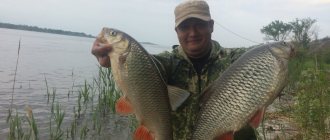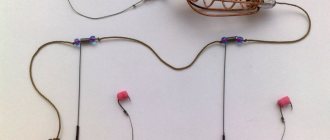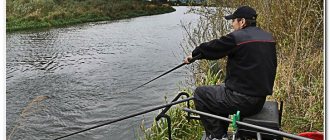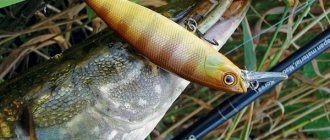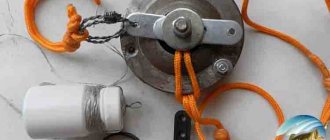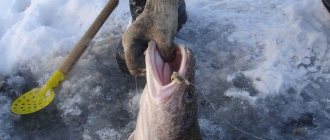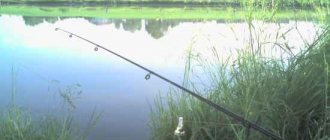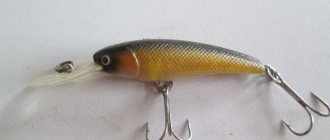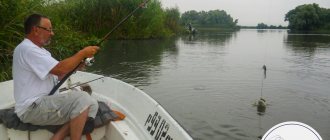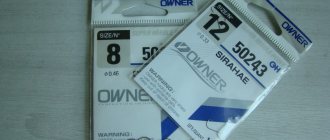⚓ Bottom tackle at the end of the season
In autumn the weather is not kind to anglers. Someone called it a sad time and hit the nail on the head. Rain, slush, wind, cold, the first serious frosts and other unpleasant things force fishing enthusiasts to cover up many gears, but not the donka. It does not depend at all on weather factors. And if we add to this the need to cast the bait at a decent distance from the shore due to the high transparency of the water and the timidity of the fish, then we can confidently say that bottom tackle is the best option for those who do not want to return home with an empty fish tank.
In the fall, you can fish with almost all types of bottom gear, be it a simple old-fashioned trick, a hastily assembled half-bottom, or a fully equipped classic feeder. The only thing you need to decide on is the feeder. For catching most peaceful species (crucian carp, bream, roach, etc.), which cannot be kept without bait, this is a mandatory element of equipment. But for fishing predators it is absolutely not needed.
The only exception is catfish. On some rivers, fishermen are quite successful in catching the mustachioed giant on a bottom with a feeder filled with fish offal.
Sometimes it happens that the object of fishing, for example, a bream, for some reason refuses to bite, but instead a chub “sits” on the hook every now and then. It is clear that there is a flock of chub in the selected area, and in this case it is not at all necessary to use a feeder. That is, it makes sense to install more suitable equipment on the bottom. This suggests a conclusion: bottom tackle for autumn fishing should be such that, if necessary, you can change equipment right on the shore, adapting to certain conditions.
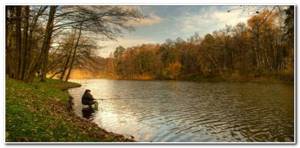
Donkey rig for pike
The first version of the equipment is mounted on the basis of an anti-twist tube for a feeder feeder , only together with it a lead weight is attached to a clasp, the weight of which depends on the strength of the current and depth. The shape of the weights is flat (holds the bottom more reliably) and as streamlined as possible - for better passage through bottom obstacles when fishing. I use this type of equipment in relatively clean areas, but it still tends to get stuck at the wrong moment due to the bent tube. But there is also an undeniable advantage over other equipment - in a matter of seconds you can change the weight of the load. In addition, tangles of the leash when casting are practically eliminated.
The second type of equipment with a conventional sliding sinker that moves freely through a through hole along the braid . Lately, I’ve been using the “airplane” type cargo most often. Thanks to its triangular and simplified shape, it practically does not cling to any bottom obstacles and withstands the pressure of any current well. The only thing you need to do with any sinker is to remove all the sharp edges so that when fishing they do not fluff up the braid.
⚓ How to catch different fish with donk in the fall
☸ Carp
Low temperatures and clear autumn water are the main reasons for carp moving to depths and reducing their activity. You can successfully catch it only in September. This month, the carp fattens, gaining weight for the winter, but this does not last long - until the onset of the rainy season. Bottom fishing for this fish begins with choosing a suitable place (a decent depression on the bottom), and if the fisherman does not know the body of water, then “reconnaissance in force” can be carried out.
In autumn, carp are caught equally well on both plant and animal baits, but experienced carp anglers recommend combining them. As an option - a combination of a worm with a canned corn kernel. Animal components must also be present in the bait mixture.
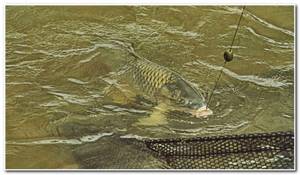
It should be noted that carp always behave extremely cautiously, especially those that have had to break hooks before, so it is advisable to use equipment with a sliding feeder. This will eliminate the resistance of a heavy object, which alerts the fish at the moment of biting. For the same purpose, it is advisable to install a leash made of invisible fluorocarbon fishing line. In autumn, carp stop biting at night; now the best time for fishing is the first half of the day. In calm, cloudy weather, it can delight you with bites, albeit infrequent, until the evening.
☸ Crucian carp
With the arrival of the first autumn cold snaps, the behavior of crucian carp, like most other representatives of the ichthyofauna, begins to change. On warm September days, it still goes out to feed in the coastal zone, but as the temperature drops, such outings become rare. In October, the crucian carp completely slides down to the depths where it needs to be caught.
The tactics for catching crucian carp with a donk in the fall are simple - search for a promising place, select bait “according to the season” and cast to the intended point. At the beginning of the autumn period, the silver beauty can still be seduced by plant baits like pea mastyrka or delicious pearl barley, but gradually it ceases to be interested in them and by the end of autumn it is caught exclusively on living creatures: maggots, worms, bloodworms.

Unlike summer, in autumn crucian carp bite more or less actively only at certain times. Typically, this is a few hours after sunrise and before dusk. It rarely feeds during the day, when there are really warm days or before bad weather.
☸ Bream
The colder it is outside, the less often bream appears in the shallow coastal zone, so bottom tackle becomes an excellent alternative to float rods. Closer to November, it finally retreats to the channel pits and only occasionally explores nearby slopes and edges in search of food. At this time, the most promising places will be the exits from the pits and the lower edges.
It is believed that in cold water bream should be caught exclusively with animal baits, but practice shows that in September in many reservoirs it can still be interested in pearl barley and corn. Sunflower cake and breadcrumbs with the addition of a certain amount of crushed worms or feed maggots are used as bait. You should not be overzealous with feeding the point, otherwise the satiated bream will cease to be interested in the bait.
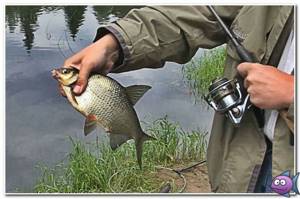
As in the summer, bream is caught on the bottom in the fall in the evening, at night and in the first half of the day. Maximum activity of the target is observed shortly before dawn.
☸ Ide
Bottom tackle for fishing ide in the fall is no different from those intended for catching other peaceful fish. The only thing it doesn't have is feeders. This element of equipment will be of little use in the autumn, and besides, it can scare off a cautious, if not extremely cowardly, ide. In addition, those who like to catch this indecisive river inhabitant are advised to use invisible fluorocarbon leashes in their equipment.
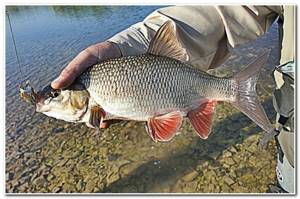
In order to have time to stock up on enough fat for the winter, with the onset of cold weather, ide switches to fairly large animal foods. The nozzle must meet his autumn needs. It could be a large worm, a dragonfly larva or a bark beetle; a jig would be an excellent bait if you’re lucky enough to get it. If you only have maggots in your arsenal, then it is better to plant several of them at once. For hunting trophy ide, live bait or a small frog are suitable.
☸ Chub
During the first half of autumn, chub is excellently caught in all rivers, both large and small. Moreover, this voracious and omnivorous fish reveals the donka to its full potential. It is possible to use two completely different equipment - classic and live bait. In the first case, the fisherman is not limited in the choice of bait; almost anything can be put on the hook, from worms and larvae to frogs and bivalves (without shells, of course).
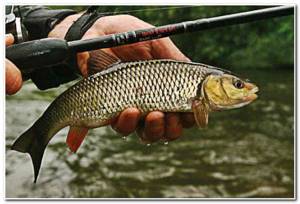
Vegetable attachments such as dough, peas, corn, bread crumb and others also work. As the weather gets colder, the lobster turns into a pronounced predator, so live bait equipment becomes relevant. It is preferable to use bleak or gudgeon as live bait.
In the fall, you should catch chub on a donk at great depths, where it begins to move in the second half of September. If you cannot find a school of this fish, it makes sense to equip the bottom with a feeder. Such “dusty” components of the bait as breadcrumbs and milk powder will help to attract the object of fishing; the composition should also contain particles of animal baits.
☸ Burbot
Donka remains effective in catching this specific fish until the bodies of water are covered with ice. It differs from the classic feeder in a more durable rod, the absence of a feeder and detachable tungsten leashes. Why should leashes come off easily? The fact is that the greedy burbot swallows the bait very deeply, so it’s easier to remove it together with the leash and put on another one.

When fishing for burbot, this technique saves a lot of time. Well, tungsten material is used in cases where the fisherman does not have the opportunity to constantly be near the gear. For example, many people throw in several dozen donks in the evening, check them once at night and remove them in the morning. Until the morning, a caught predator can easily grind an ordinary nylon fishing line with its small bristle-like teeth. You shouldn’t rule out a pike bite.
Baits for autumn burbot fishing include pieces of fish, bunches of worms and live bait. It is better to fish in very deep areas with a rocky bottom. The rule applies to this fish: the deeper the bait is, the larger the prey.
☸ Pike
In the fall, when the toothy predator fattens, tirelessly chasing the fry, the donkey clearly loses to the spinning rod. This is understandable, because the spinning rod is much more mobile, it can quickly fish a large area of water, in addition, the spinner behaves the same in both warm and cold water, while the activity of live bait at low temperatures leaves much to be desired. And yet, in some cases (for example, in muddy water and other specific conditions), it is possible to effectively catch pike only with bottom tackle with live bait equipment.
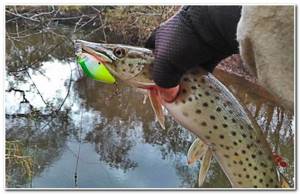
Do you need a leash when catching pike on a donk?
Disputes still continue about the advisability of using a metal leash when fishing for pike. Does it alarm the fish? Does it always save you from cutting lines? There are many questions and different answers.
Choosing a leash for catching a predator
I will express my opinion: I put a leash only when it is not possible to make an instant hook, and the fish has time to swallow the hook deeply, cutting off the whip. Although a pike leash is not an ironclad guarantee, it always saves you from sharp teeth. Not that often, but regularly we had to find baits with leashes and bitten off lines in the stomachs of caught predators. And these were not pound monsters at all, but 1-2 kilogram individuals. It also happened that when fishing with a spinning rod, a pike bit off the braided line above the leash. Be that as it may, I am sure that a metal leash plays a negative role in catching pike with an active bottom, so I decided to exclude it from my equipment.
Although a leash, of course, wouldn’t hurt, a soft one, for example, made of fluorocarbon. In a couple of seasons there were only two cuts of the fluorocarbon leader, and those occurred due to a long time of fishing for pike. I use pieces of fishing line 30-50 cm long with a diameter of 0.4 mm. At one end I knit a loop, with the help of which I connect the leash to the main lash through a reliable carabiner with a swivel, and I tie a hook to the other end.
For bottom live bait fishing I use only a single hook, which is least alarming to cautious pike. And snags on the grass and snags are much less common in the single-single. True, due to the presence of only one sting, the requirements for the hook are especially strict - strength and sharpness must be impeccable.
I tie a single line to the leash with a regular fishing knot for tying hooks. At the same time, I take into account that fluorocarbon is hard, I try to tighten the knot tightly on the shank of the hook, in order to avoid it coming undone at the most inopportune moment. For reliability, I additionally lubricate the finished assembly with high-quality instant glue. It was not possible to burn the free tip - real fluorocarbon melts very poorly with the fire of a match.
Before going to the pond, while still at home, I prepare a foam leash. The vast majority of my hooks are number one with a short shank, a slightly curved tip, forged hooks - for the best penetration into the bony mouth of a predator. I rarely use ready-made bottom mounts.
⚠️ Summary
As for the choice of live bait, the angler is unlimited. In autumn, the appetite of a predator can be envied. She rushes at all living things that fall into her field of vision and fit into her mouth, so any small and sufficiently mobile fish will do.
Donka fishing in the fall is an interesting and exciting activity. Any of the variations of this gear can give no less adrenaline than spinning fishing. Well, there’s no need to talk about catches.
Postavukhi
Often when fishing they use so-called supplies.
This is when good places for catching burbot are inaccessible from the shore. Often in such places there are deep holes around a bend in the river, the banks of which are littered with driftwood and trees lying in the water. Throwing a throw in such places means an inevitable snag and a break in the line of the tackle. Meanwhile, the place is very advantageous in that immediately after the rift the bottom drops off. As they say, the eye can see and the tooth can go away... The fisherman feels in his gut that the nocturnal predator must definitely be there. A boat is needed here. From it you can put donks, at one end of which there is a float, and at the other - a heavy sliding sinker and a pair of leashes with hooks. An ordinary plastic “one and a half” can also be used as a float, of which there are many lying on the banks of our rivers. Russian fishermen do not always burn garbage after themselves or take it away in the trunks of their cars, not to mention wild tourists who shit on themselves with the naturalness of an animal herd...

What can you catch on a donkey?
The donka, as you might guess from the name, is used to catch bottom fish. These are mainly white fish, preferring plant and animal baits.
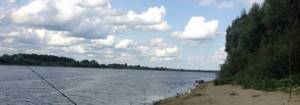
Crucian carp, carp, bream, roach - these are the most common trophies of fishermen using this tackle. But at the same time, you can slightly modify the bottom for fishing with live bait. And pike, perch and pike perch will be added to the possible trophies.

Where to look for burbot and when
Just look! Experienced fishermen say that the main thing when catching burbot is to find it. You can, of course, try your luck with one donka, but you are unlikely to get the desired result.
The bite begins at dusk and lasts until dawn. In this regard, it is better to explore the area before dark and find possible points of his stay, and place donks in the evening. And be prepared that the search may take more than one day.
It is known that burbot from the middle zone loves the clean water of small rivers with fast currents and a rocky, muddy bottom. Attention should be paid to snag areas, confluences of small rivers and streams, transitions between current and calm water, and islands. As the temperature drops, small fish - the main prey of burbot - look for secluded places and accumulate where energy consumption is least. This is where he will be.
In general, burbot begins to hunt, gradually moving from the bottom closer to the shore. That is why it is best to use bottom tackle when fishing.
By the way, the issue of distance from the surface of the water is not particularly important. Representatives of quite large sizes are often found at shallow depths.
In the middle zone, burbot fishing begins to be actively caught from mid-October until the start of spawning, again, depending on the water temperature. The second wave will be fishing after spawning - from February to the end of April. Autumn burbot is very active, as it needs to stock up on energy before spawning after summer hunger.
Closer to the north, increasingly larger specimens begin to be found: in the rivers of Siberia, burbot grows up to 20 kg, while in the middle zone it is 1-1.5 kg. There is an opinion that the small population of burbot in the middle zone is associated with pollution of water bodies.
Bait for catching burbot on a donk in autumn
Dead fish
Of course, the best bait for catching burbot in the fall can be considered a crawler. A crawler is a large worm, usually 15-20 cm long. Such a worm is too tough for small fish, but burbot becomes a tasty prey. In addition, as an addition to this bait you can catch carp, carp, catfish, large crucian carp, tench and other peaceful fish.
Another very good bait for burbot in the fall is live bait. Larger burbot may bite on such bait, but the likelihood of other fish biting decreases. When catching burbot with live bait, you may also be pleased with the bite of pike, but most often such joy ends in
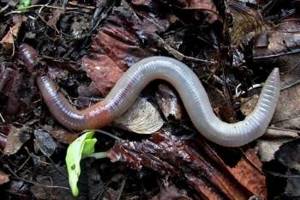
Crawling out
the pike successfully bites the line and leaves, ruining your equipment. But if you catch burbot at night, then you are not in danger of a pike bite, because this predator is inactive at night. But an opportunity arises to catch pike perch. The teeth of a pike perch do not pose any danger to your fishing line and you can easily fish it out using a rig without a leash.
For catching burbot, it is best to use bottom species of small fish as live bait. Since burbot always hunts near the bottom and is not interested in fish that swim in the middle
Zywiec
or upper layers of water, it is better to use live bait such as:
- ruff;
- gudgeon;
- perch;
- loach, etc.
Also, as bait for catching burbot in the fall on a donk, you can very successfully use a dead fish or its pieces. After all, as mentioned above, when hunting, burbot uses smell more than other senses. Dead fish give off a specific smell, and some fishermen specifically crush the bait with the sole of a boot or dry it in the sun to get a dead fish. Whatever one may say, each body of water is individual, just like the burbot in this body of water. In some places the optimal bait will be live bait, in others it will be a dead fish, and in others it will be a crawler.
If you use several bottom gear, you can successfully calculate which bait is most effective on a particular body of water and, after it is determined, load exactly this bait on all gear.
A useful addition to this information will be the article “The best bait for burbot.”
Autumn bream fishing by month
In September
In September, bream continues to be caught in the same places as in summer. At this time, it is still quite possible to fish in relatively shallow water, as well as in areas with a current, where he takes bait not only from the bottom, but also half-water.
On clear sunny days, a confident bream bite is observed only in the morning and evening. During this period, it is caught using worms, maggots, cereals, cereals, dough, pastes and combined sandwiches. On calm cloudy days, bream stands in deeper places and bites almost all day.
Bream can be caught using a feeder, a bottom, or a float rod. At this time, it is necessary to remember to regularly feed the bream during the fishing process. The bait must contain components of the bait or attachment that is used for fishing.
In October
In October it gets significantly colder, and bream begins their autumn migration to their wintering holes. However, it often stays in the same pits all year round, leaving them only during spawning. Knowing the location of such holes, you should patiently and methodically fish for them, offering the bream a variety of baits.
Despite the fact that in October the activity of bream decreases, it does not stop feeding. Periodically (especially in good weather), schools of bream leave the hole and move around the reservoir. In this case, it is good to catch it from a boat, and use an echo sounder to find the school.
In October, thinner and more delicate tackle is used to catch bream than in September. Feed the bream in small portions.
